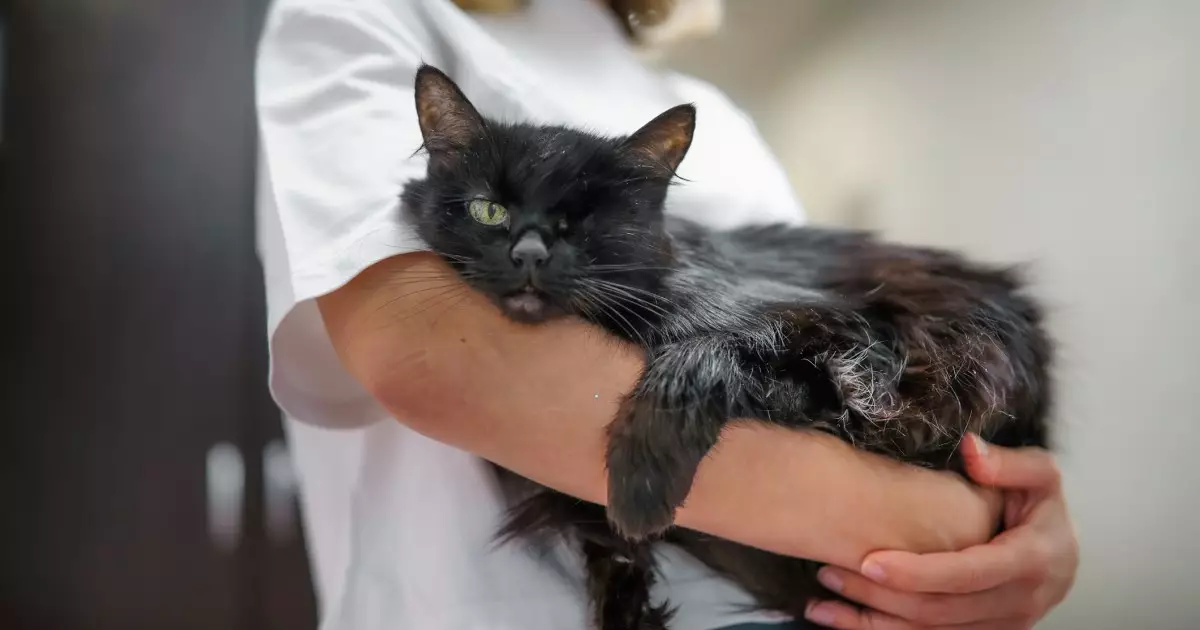Cats are known for their independent spirit and captivating personalities, but one-eyed cats stand out for their resilience and adaptability. These extraordinary creatures face challenges that are often misunderstood. Whether they have lost an eye due to trauma, illness, or congenital conditions, their capacity to thrive in a loving environment is remarkable. Contrary to common assumptions, one-eyed cats can live fulfilling lives with the right care and understanding from their humans.
The reasons behind a cat’s vision impairment can vary. Traumatic injuries—often the result of their natural curiosity—are the most frequently encountered causes. Cats can find themselves in precarious situations, leading to scrapes, scratches, or more severe wounds. Moreover, infections such as feline herpesvirus can escalate into conditions that necessitate surgical removal of the eye. Genetic anomalies may also play a role, contributing to congenital disabilities that affect eye development from birth.
It’s important to distinguish one-eyed cats from completely blind cats. While both groups face unique challenges, they experience very different realities regarding their vision. Cats with one eye typically retain some level of sight through their remaining eye, enabling them to navigate their surroundings and partake in daily activities with relative ease. Their ability to sense movement and discern objects allows them to lead a life that is significantly more independent than that of blind felines, who must rely heavily on their other senses for navigation.
While both types benefit from special accommodations, the approaches vary. For one-eyed cats, the goal is to enhance their existing capabilities. For blind cats, providing a safe, consistent environment is crucial, as they depend on sound and texture for awareness of their surroundings. It’s this fundamental difference that shapes how caregivers approach the needs of their visually impaired furry friends.
Adapting your home to accommodate a one-eyed cat is a caring endeavor that requires simple yet thoughtful changes. Firstly, pay attention to the height of their resting areas. High structures may pose a challenge due to impaired depth perception, so furnishing your home with lower perches or ramps ensures safe access to their favorite lounging spots.
If your home contains stairs, include ramps or pet steps to reduce the risk of balance issues. The familiarity of a consistent home layout is vital for all cats, but especially for those with limited vision. Avoid frequent rearrangements to help your one-eyed cat navigate confidently without confusion.
Outdoor access, while enjoyable, necessitates increased vigilance. Supervise outdoor activities to safeguard your cat from hazards they might otherwise miss. Additionally, maintaining a clean litter box is crucial, as it minimizes the risk of irritants affecting their remaining eye.
Safety Measures and Caring Habits
When it comes to play, opt for gentle toys that will not pose a threat to your cat’s eyesight. Steer clear of toys with sharp edges or pointed surfaces, which could inadvertently cause harm. As with all pets, regular veterinary check-ups should be a priority, monitoring their health closely will allow any potential issues to be addressed before they escalate.
An integral part of caring for a one-eyed cat lies in the emotional connection established between pet and owner. Understanding their unique behaviors and accommodating their needs fosters a nurturing environment for these resilient creatures. Shower them with love and attention, and they will return the favor tenfold with loyalty and affection.
The journey of a one-eyed cat encompasses various challenges, yet it is also filled with opportunities for joy, companionship, and resilience. By recognizing their specific needs and taking appropriate measures to provide a safe and accommodating home, you can ensure your one-eyed feline lives a happy life. Embrace their individuality, and cherish the love they bring into your world, as one-eyed cats teach us the true meaning of adaptability and strength.


Leave a Reply